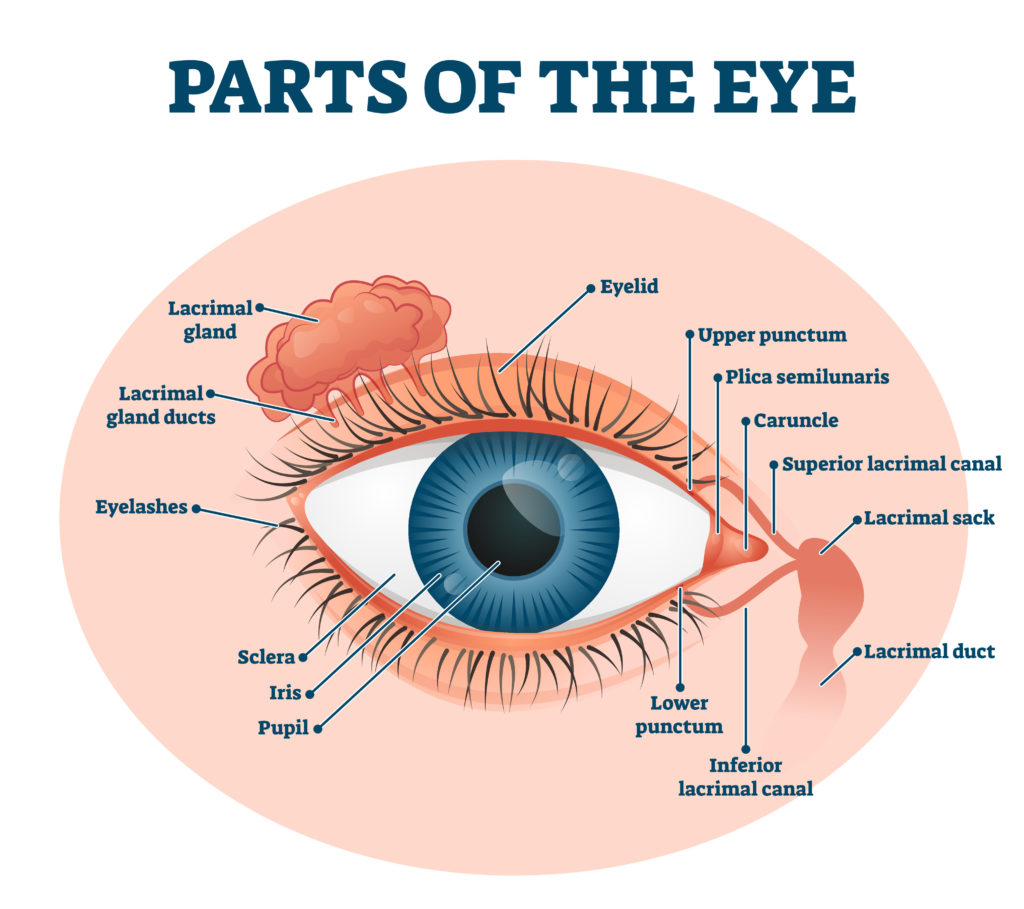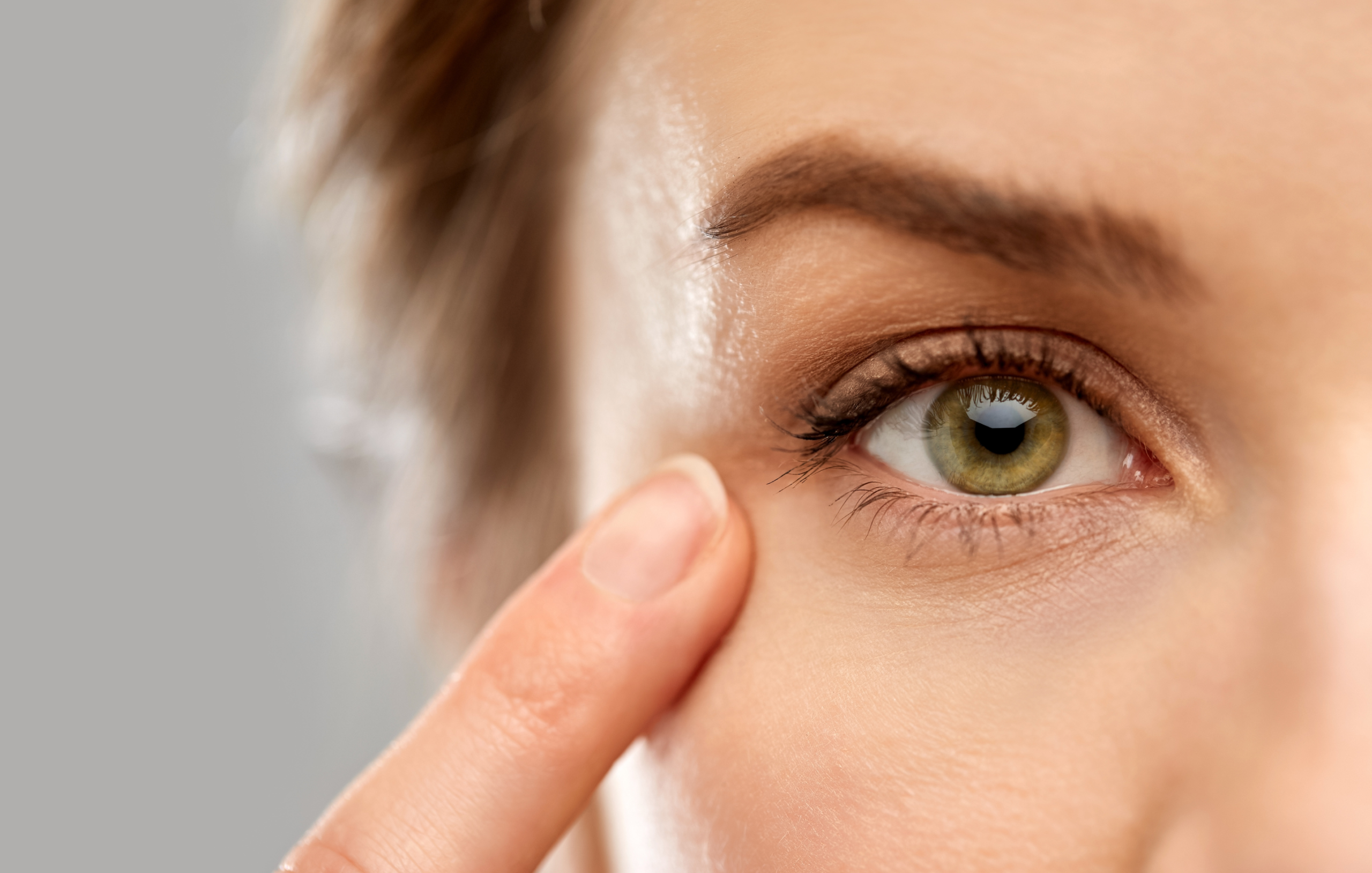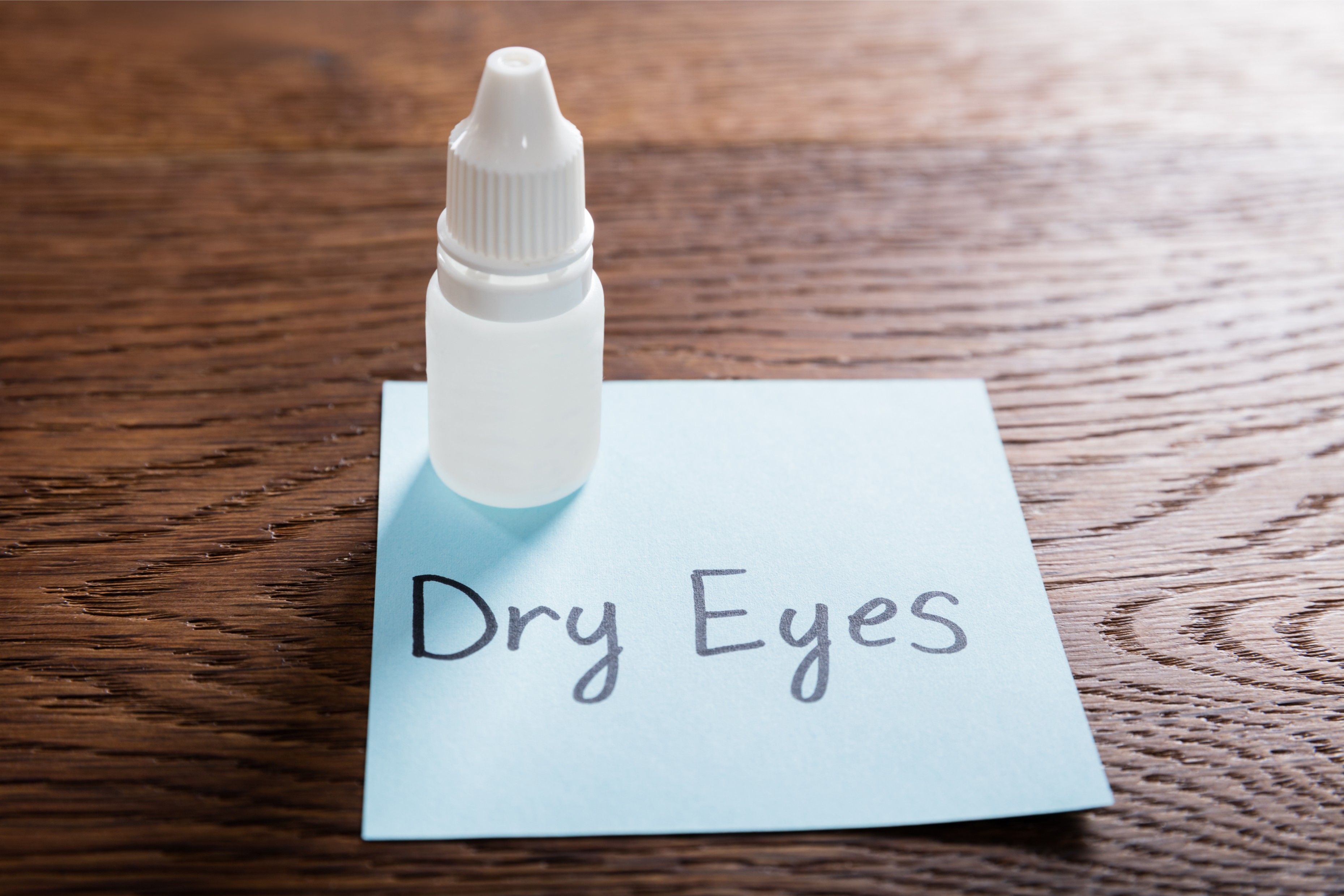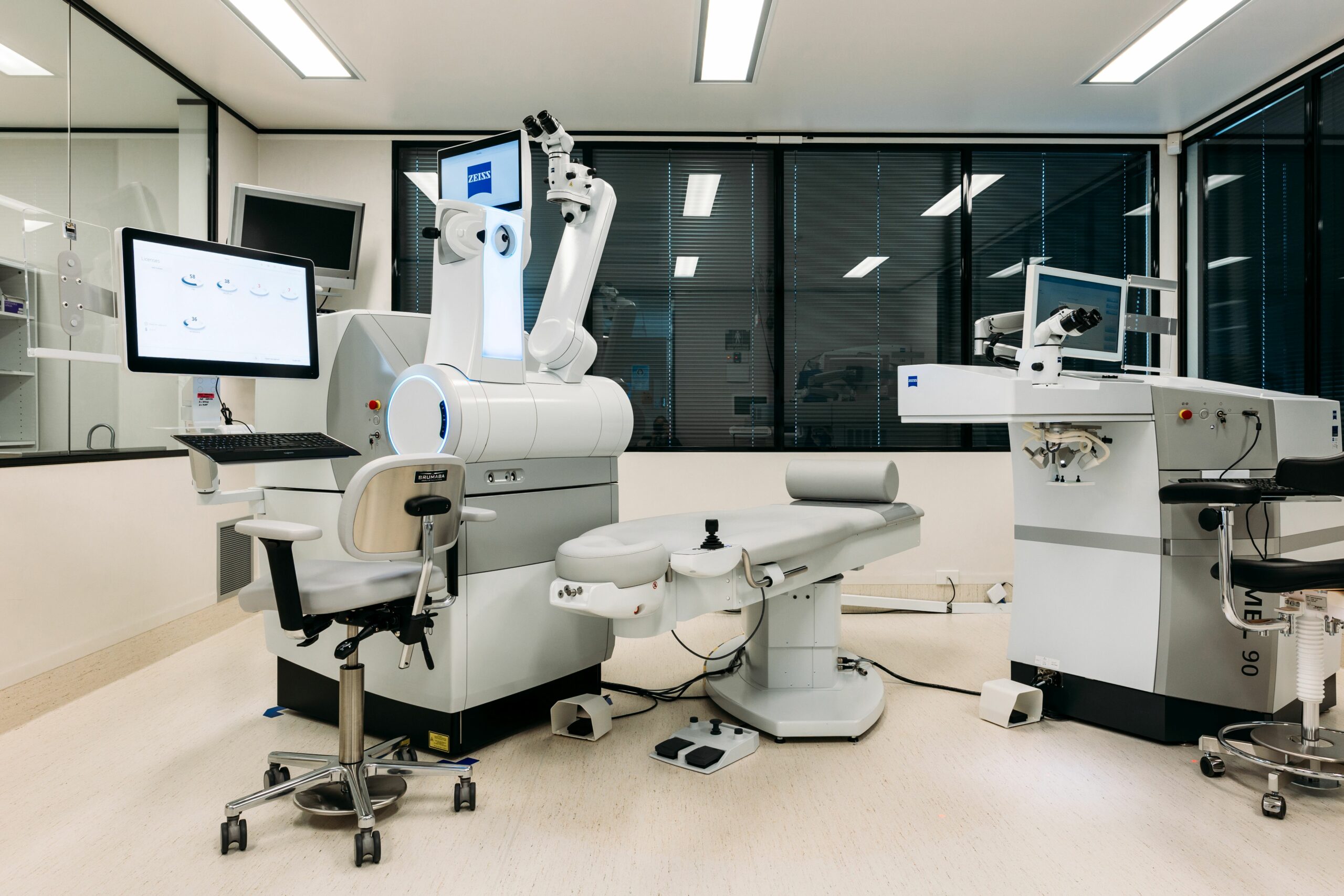
Wellington Eye Centre Optometrist
Do you have constantly watery eyes? Perhaps you even have tears running down your face? Sick of people asking you if you’re OK? Or if you have been crying? Well watery eyes aren’t something you just have to put up with. There are some solutions available to help.
Watery eyes are very common and are usually temporary. For a small percentage of the population though the wateriness is constant. And if the tears are spilling on to the cheeks, the condition is called Epiphora.
Watery eyes might not sound like a big deal, but for those who suffer from Epiphoria, it is one annoying and medically significant issue.
What causes watery eyes?
We are constantly making tears, this normal tear production is called basal tearing. It is normal to have the occasional watery eye from basal tears, in certain situations the eye will also make extra tears in response to certain stimuli. These tears are called; reflex tears or emotional tears.
Reflex tearing occurs in response to:
- strong smells and gases such as onion vapour, perfume, tear gas, pepper spray, fumes from cleaning products, smog etc.
- the consumption of hot or peppery foods,
- physical irritants like dust, ash or sand in the eye,
- cold air, wind or bright light,
- yawning, coughing, vomiting,
- the common cold, flu or allergy.
The main purpose of reflex tearing is to flush out any irritant that may have come into contact with the eye.
Emotional tearing, crying or weeping occurs in response to:
- emotional stress,
- pleasure, laughter, happiness,
- frustration,
- pain, anger, fear, grief, sadness,
These tears have a different chemical composition to other tears, including a natural painkiller.
Epiphora, what is it?
Epiphora is the overflow of tears, so that they spill on to the cheeks. It gives the appearance of crying, but there is no emotional trigger, it can occur at any time of the day and for some people it is constant.
Epiphora can lead to poor vision, skin irritation of the eyelids and cheeks, and it can create unwanted attention from those around you. The psychological impacts are often under reported.

What causes Epiphora?
Epiphora can be caused by two main issues; the decreased drainage of the tears and/or excess production of tears.
The largest component of tears, the lacrimal fluid is constantly secreted by the lacrimal gland. This gland is found in the eyelid above each eyeball, towards the outer side of the face. Each blink smooths the tears over the surface of the eyes and toward the inner corner of our eye. There are two small openings, called puncta, visible on the lower and upper eyelid, close to the nose. These small holes drain the tears away from our eyes, through the nasolacrimal duct, down the back of our nose and throat into our stomachs. Also known as your tear duct.
A physical blockage at any point in this drainage system can cause epiphora. Blockages can be as innocuous as swollen tissue from hayfever or more sinister (but much less likely) such as a tumour.
What can cause a reduction in the drainage?
- Punctal plugs – small plastic tubes inserted intentionally into the puncta to slow the outflow of tears. Commonly used to treat dry eye disease.
- Infection in or near the nasolacrimal system, such as Dacryocystitis or conjunctivitis.
- Inflammation of the area as in hay fever (rhinitis)
- Age related changes to the surrounding tissue. A loosening of the conjunctiva and the tissues lining the ducts can cause the ducts to narrow and can completely cover the puncta.
- Ectropion – when the eyelids roll away from the eyeball, moving the puncta away from the tears.
- Trauma, injury or surgery to the area can alter the structure of the drainage ducts. Such as a broken nose or sinus surgery.
- Nerve damage to the facial nerve can alter the effectiveness of the blink, reducing the force that the tears are propelled to the puncta, so less tears will be drained. This can occur with neurosurgery, sinus surgery, stroke, Bell’s palsy and even with face lifts or dental surgery.
- Failure of the nasolacrimal duct to open is seen fairly commonly in babies, often causing a watery or sticky eye. It tends to resolve on its own, or can be corrected with a simple procedure.
What can cause an abnormal excess of tears?
- Uncontrolled Inflammation of the surfaces of the eye
- Which occurs in many eye conditions (conjunctivitis, blepharitis, hay fever, corneal infections)
- Dry Eye is also an inflammatory eye condition, and is the most common cause of abnormal excess tear production.
- Trichiasis – a condition where the eyelashes are turned inward toward the surface of the eye causing irritation.
- Entropion – a condition where the eyelid is scarred or damaged forcing it to roll toward the surface of the eye causing irritation.
People often think Epiphora is caused by advanced aging, and assume there is no treatment. Although Epiphora is more likely to occur as we age, there are treatments available.

Treatment of Epiphora
Which treatment option will work for you depends on the underlying causes, which can differ from person to person.
The first step is to treat any inflammation of the eye’s surfaces. So that might involve treating hay fever or eye infections. It might involve removal of an eyelash or more involved Dry Eye Treatments. For more information on the treatment options, check out our pages on Dry Eye and Meibomian Gland Dysfunction.
If this doesn’t treat the symptoms then eyelid surgery may be considered to reshape or strengthen the eye lids. This might involve:
Ectropion Repair Surgery which involves the surgeon removing a small section of your outer eyelid, in a triangular shape. When the eyelid is stitched back up, the eye lid is effectively shorter and firmer. This should stop the eye lid rolling away from the eyes surface, creating a more effective blink and help keep the tears in the eye area.
Blepharoplasty which repairs droopy eyelids by removing excess skin, muscle and fat. This can reduce the weight and size of the eyelid. Usually this makes the blink more effective as well as having other benefits such as increased peripheral vision (and a more youthful appearance).
It is very common for an individual’s watery eyes to be caused by multiple factors, and more than one treatment option is usually required to reduce or resolve the symptoms.
Eyelid surgery can be performed by Plastic Surgeons and by Ophthalmologists who specialise in eyelids. We don’t do eyelid surgery here at the Wellington Eye Centre, but if you are here to see us for other eye related issues, we can refer you on to one of the surgeons who does specialise in this field.
The Importance of Tears
Tears are important to our eyes for many reasons. A properly functioning layer of tears will;
- Keep the surface of our eyes moist and comfortable.
- Protect our eyes by flushing away bacteria, viruses, allergens and debris.
- Soothe an irritated eye.
- Ensure a smooth and clear optical surface, helping us to see clearly.
- Tears also contain antimicrobial properties.
- Tears have the ability to buffer the pH of the ocular surface and local eye environment, helpful in defending the eye from harm.
- Because the cornea has no blood vessels, the tears help transport oxygen and nutrients to the front surface of the eye.
When our tear layer isn’t functioning normally it can cause problems such as dry eye, corneal scarring, loss of vision, pain and infection. Dry Eye is a significant issue for many people.
The Importance of a Blink
Every time we blink, the force of our eyelids helps stimulate the production of tears and smooths the layer of tears evenly over the outer surfaces of our eye. If the eyelids aren’t functioning properly, the blink will be less successful in producing and distributing the tears.
When we blink voluntarily, an intentional action, we tend to blink completely. A complete blink is when the top eyelid and the bottom eyelid meet, and make contact along the length of the eyelids.
However the blink we do most often is involuntarily, we do without thinking about it. Involuntary blinks have a greater chance of being incomplete. An incomplete blink means there is less tear production, and a less effective distribution of tears. This most frequently leads to a drying out of the eyes surface, especially in the space exposed between the eyelids. Very much like curtains, if the two curtains don’t completely meet in the middle, they will let too much light into the room.
If you have any further questions about watery eyes, any symptoms you may have and recommended treatments, you can call us on 0800 733 327 to speak to a member of our team.

Festive Season and Your Eyes

Vitamins For Good Eye Health and Vision

Help my eyelid is twitching!

Do you need to have eye exams after laser eye surgery?

Restasis Eye Drops for the Treatment of Dry Eyes

Meet The Team at the Wellington Eye Centre

Festive Season and Your Eyes

Naumi Studio Hotel Wellington

What to Expect on The Day of Surgery

